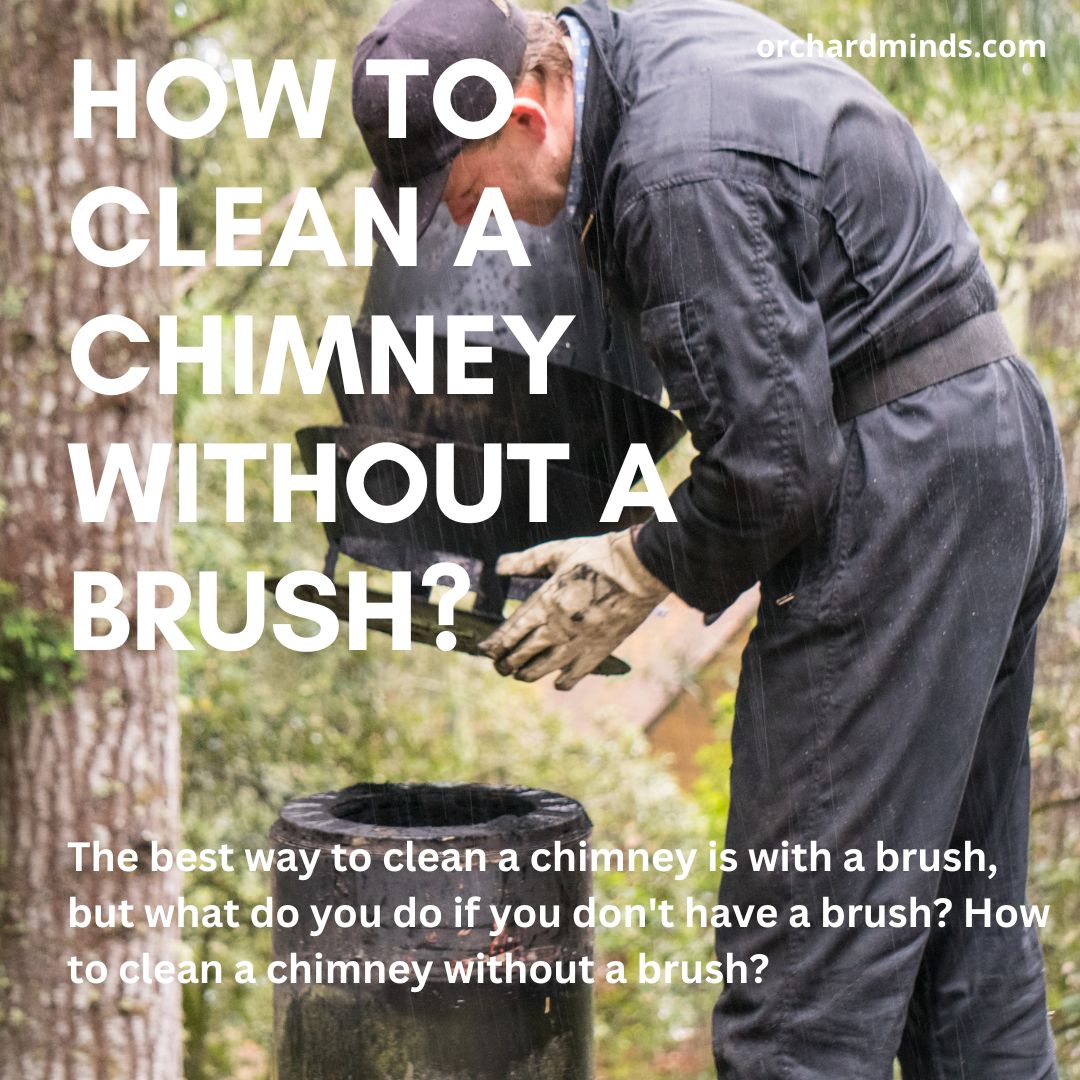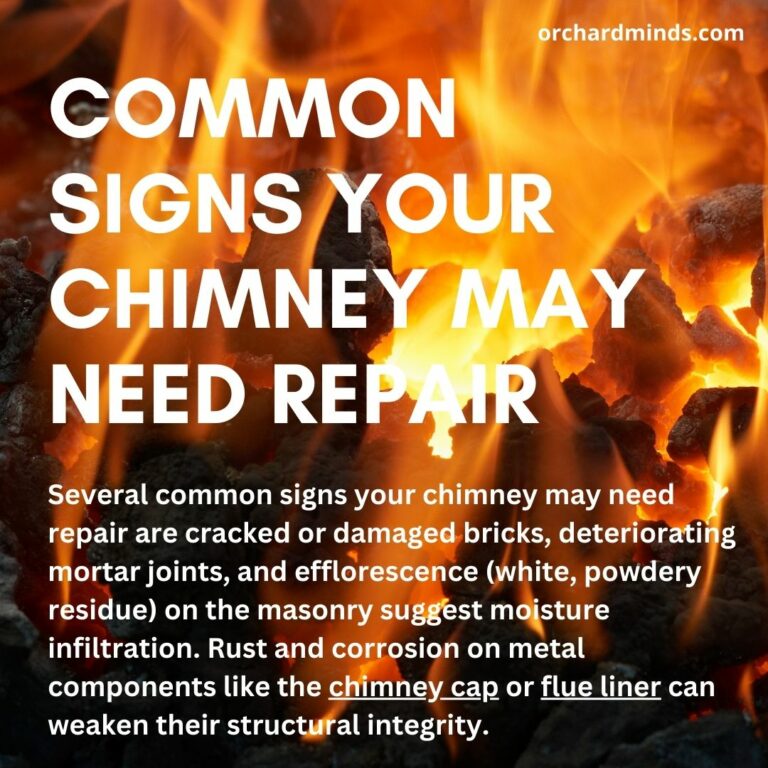If you have a wood-burning fireplace, you know that one of the most critical maintenance tasks is regularly cleaning your chimney. This helps prevent dangerous chimney fires and keeps your fireplace operating efficiently. The best way to clean a chimney is with a brush, but what do you do if you don’t have a brush? How to clean a chimney without a brush?
Here are some tips for cleaning a chimney without a brush:
1. Use a vacuum cleaner with a long hose attachment.
2. Climb the roof and use a garden hose to spray water down the chimney.
3. Use a chimney sweep’s pole with a brush attachment.
4. Hire a professional chimney sweep to clean your chimney.
5. Use a chemical chimney cleaning product.
Which method you use will depend on the type of chimney you have and your personal preferences. Whichever method you choose, follow the manufacturer’s instructions carefully to avoid damaging your chimney.
Materials You Will Need
Before you embark on cleaning your chimney without a brush, gather the necessary materials to ensure a smooth and safe process:
- Protective Gear: Safety is paramount. Equip yourself with safety goggles, a dust mask, gloves, and long-sleeved clothing to shield yourself from soot, creosote, and debris.
- Drop Cloth or Plastic Sheeting: Cover your fireplace and surrounding area with a drop cloth or plastic sheet to prevent any mess.
- Ladder: Depending on the chimney’s height, you might need a sturdy ladder to access the roof safely.
- Cleaning Rods: Instead of a brush, opt for flexible cleaning rods made of fibreglass or nylon. These will enable you to reach the interior of the chimney.
- Chimney Sweep Tools: Consider investing in specialized chimney sweep tools like a chimney whip or a chimney ball, specifically designed for cleaning chimneys without brushes.
- Flashlight: A powerful flashlight will be invaluable for inspecting the chimney’s interior, ensuring no blockages or debris.
- Safety Rope: If you need to access the roof, have a safety rope and harness to secure yourself properly.
How to Clean a Chimney Without a Brush
To clean a chimney without a brush:
- Begin by thoroughly assessing the chimney’s condition to identify any damage or blockages.
- Seal the fireplace to prevent debris from entering your living space, and access the roof safely if needed.
- Attach flexible cleaning rods with an appropriate chimney sweep tool and insert them into the chimney from the top, scrubbing the interior to dislodge soot and creosote.
- Periodically inspect with a flashlight to ensure cleanliness.
- Clean up any debris that may have fallen into the fireplace, and once satisfied with the cleanliness, remove the cleaning rods carefully.
- Clean the area around the fireplace and dispose of debris properly.
- Ensure safety precautions throughout the process.
Cleaning Steps
Step 1: Assess the Chimney
Begin by conducting a thorough assessment of your chimney’s condition. Inspect the exterior and interior for any signs of damage or obstructions that may hinder the cleaning process. Look for:
- Cracks or deterioration in the chimney structure.
- Loose bricks or mortar that could pose a safety risk.
- The presence of animal nests, leaves, or debris that could block the chimney.
Ensure the chimney is cool to the touch and free from recent fire residue, as working on a hot chimney can be dangerous.
Step 2: Seal the Fireplace
Close the damper tightly to prevent any debris or soot from entering your living space. Then, seal off the fireplace opening using cardboard or plastic secured with tape or a similar material. This step is essential for keeping your home clean during the cleaning process.
Step 3: Access the Roof
If your chimney is not accessible from within your home, you may need to access the roof. Use a sturdy ladder and wear your safety gear, including a safety harness, if necessary. Position yourself carefully near the chimney, ensuring that someone knows your presence on the roof for added safety.
Step 4: Attach Cleaning Rods
Assemble your cleaning rods by connecting them to reach the necessary length. Attach the appropriate chimney sweep tool, such as a whip or ball, to the end of the rod. Start by gently inserting the rods into the chimney from the top, and slowly work your way down the chimney’s interior.
Step 5: Scrub the Chimney Interior
Move the cleaning tool up and down inside the chimney. The flexible rods will help dislodge any soot, creosote, or debris accumulated on the chimney walls. Take your time during this step to ensure a thorough cleaning. Be patient, as some areas may require extra attention.
Step 6: Inspect with a Flashlight
Periodically, use a powerful flashlight to inspect the chimney’s interior. Check for any remaining buildup or blockages. Shine the light in various directions to ensure you don’t miss any areas that require additional cleaning. Continue cleaning until the chimney appears satisfactorily clean.
Step 7: Clean the Fireplace
After completing the chimney interior cleaning, remove the seal from the fireplace. Check for any debris that may have fallen during the cleaning process, and carefully collect and dispose of it safely. This step ensures that your living space remains clean and debris-free.
Step 8: Final Inspection
Once you’re satisfied with the cleanliness of the chimney’s interior, carefully remove the cleaning rods from the chimney. It’s crucial to be cautious during this step to avoid damaging the chimney’s liner or structure. Conduct a final inspection to ensure the chimney is completely clean and free from obstructions.
Step 9: Cleanup
Safely dispose of the debris collected during the cleaning process. Thoroughly clean the area around the fireplace, removing any remaining dust or residue. Remove the drop cloth or plastic sheet used to protect your living space, ensuring everything is tidy and safe.
Following these steps will help you effectively clean your chimney without using a brush, ensuring proper maintenance and reducing the risk of chimney fires.
FAQS about How to clean a chimney without a brush
Is it safe to clean a chimney without a brush?
Cleaning a chimney without a brush can be safe if done correctly and with the right tools. However, it’s essential to prioritize safety and consider hiring a professional if you’re unsure or uncomfortable with the process, especially if it involves roof access.
What are the risks of not cleaning a chimney?
Neglecting chimney cleaning can lead to the accumulation of creosote and soot, which can block airflow, reduce heating efficiency, and increase the risk of chimney fires. It can also result in harmful carbon monoxide buildup in your home.
Can I use regular cleaning tools instead of a chimney brush?
While chimney brushes are designed for the task, you can use specialized chimney sweep tools like a whip or a ball, which are suitable alternatives. Regular household cleaning tools are not recommended as they may not effectively remove creosote and soot.
How often should I clean my chimney?
The frequency of chimney cleaning depends on usage. As a general guideline, having your chimney inspected and cleaned at least once a year is recommended. However, more frequent cleaning may be necessary if you use your fireplace frequently.
What should I do if I encounter an obstruction while cleaning the chimney?
If you encounter an obstruction, stop cleaning immediately. Attempting to force the obstruction can cause damage. Instead, contact a professional chimney sweep to safely assess and remove the obstruction.
Can I clean a chimney from the bottom instead of the top?
It’s generally more effective to clean a chimney from the top down. Cleaning from the bottom can push debris upward and create more blockages. Cleaning from the top allows debris to fall to the fireplace, where it can be easily removed.
How can I tell if my chimney is clean after cleaning without a brush?
After cleaning, use a flashlight to inspect the chimney’s interior thoroughly. It should appear free of creosote, soot, and any obstructions. A clean chimney will have smooth, unobstructed walls.
Can I use water to clean my chimney without a brush?
Using water to clean a chimney is not recommended unless you have a masonry chimney and are addressing a specific issue. Water can cause damage to metal flues, and cleaning with water may not effectively remove creosote and soot.
Is chimney cleaning a DIY task, or should I hire a professional?
While some homeowners with experience may safely clean their chimneys, hiring a professional chimney sweep is often safer and more effective, especially if you’re unsure about the process or if your chimney requires extensive cleaning or repairs.
How can I prevent the need for frequent chimney cleaning?
To reduce the need for frequent chimney cleaning, burn seasoned hardwoods, use a spark arrestor or cap to prevent debris from entering the chimney, and schedule regular inspections to catch problems early.




Leave a Comment